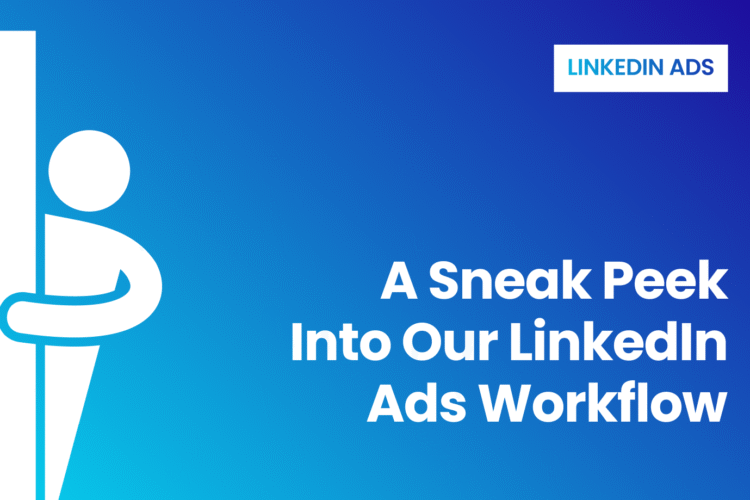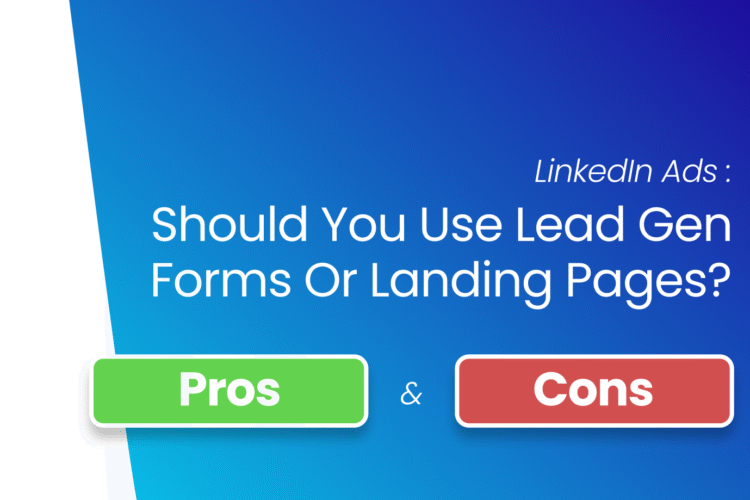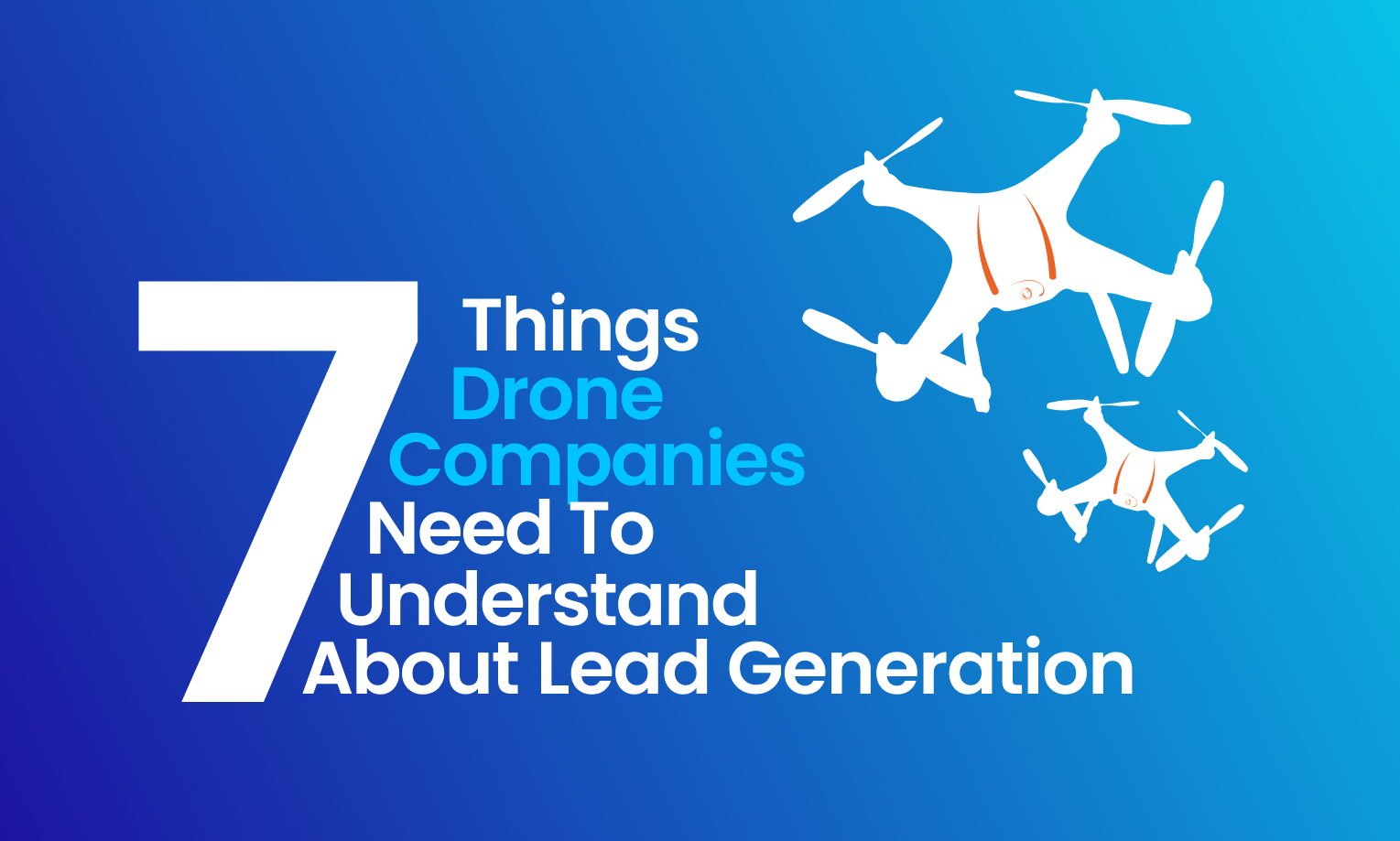
The drone industry is booming.
Now, a $4.4 Bn industry (growing with a CAGR of 2.18%), drones are all set to change how different sectors run their operations on a day-to-day basis.
Inspections, security, data collection, operations, precision farming, and entertainment are some industries already leveraging drones.
In fact, e-commerce giants like Amazon are now experimenting with using drones to deliver customer packages and manage their inventory.
But despite all the innovation and adaptation, one thing remains a major challenge for the industry: lead generation.
In this article, we’ll understand why drone companies are having a tough time finding the right prospects and the 7 fundamental marketing problems that they need to decipher right away.
Key Challenges that Drone Companies Are Facing with Lead Generation
When Flyability came to us and then 4 drone projects back to back after that, we started seeing a pattern in their lead generation foundations.
Drone companies often face issues with:

- Unclear value proposition
“All drones look similar. What’s new with yours?”
Drone companies often face challenges in regards to setting up a unique value proposition.
Most companies’ value propositions are similar, so it becomes crucial to understand what makes you different.
Find out the one thing about the latest technology that you are providing that others aren’t, and capitalize on that.
- Complex technical offers
Drone services have to provide some technical education before a lead is ready to buy—so they need content that explains why the drone approach is better than traditional methods.
- Targeting a niche market.
Since drones are a new technology, many times the companies don’t even know they need drones yet. Hence, creating this demand and getting your ideal buyer’s attention becomes a huge challenge.
- Defining your buyer persona or the right job profiles that would make the final drone operational decisions in their companies.
Having worked with multiple drone companies, including Flyability, we have learned to crack down on their lead generation challenges.
Here’s a breakdown of the 7 things every drone company needs to understand about lead generation, along with the real-world strategies we’re using to help our drone clients succeed.
1. Understand Your Business
Before you can market your service, you need to be brutally clear about what your business actually does. Are you focused on asset inspections in oil & gas? Infrastructure monitoring? Agriculture? Surveying?
Too many drone companies try to be everything to everyone. But in reality, specialization is key. Knowing your core capabilities and how they deliver value in specific industries is the first step toward a scalable lead generation strategy.
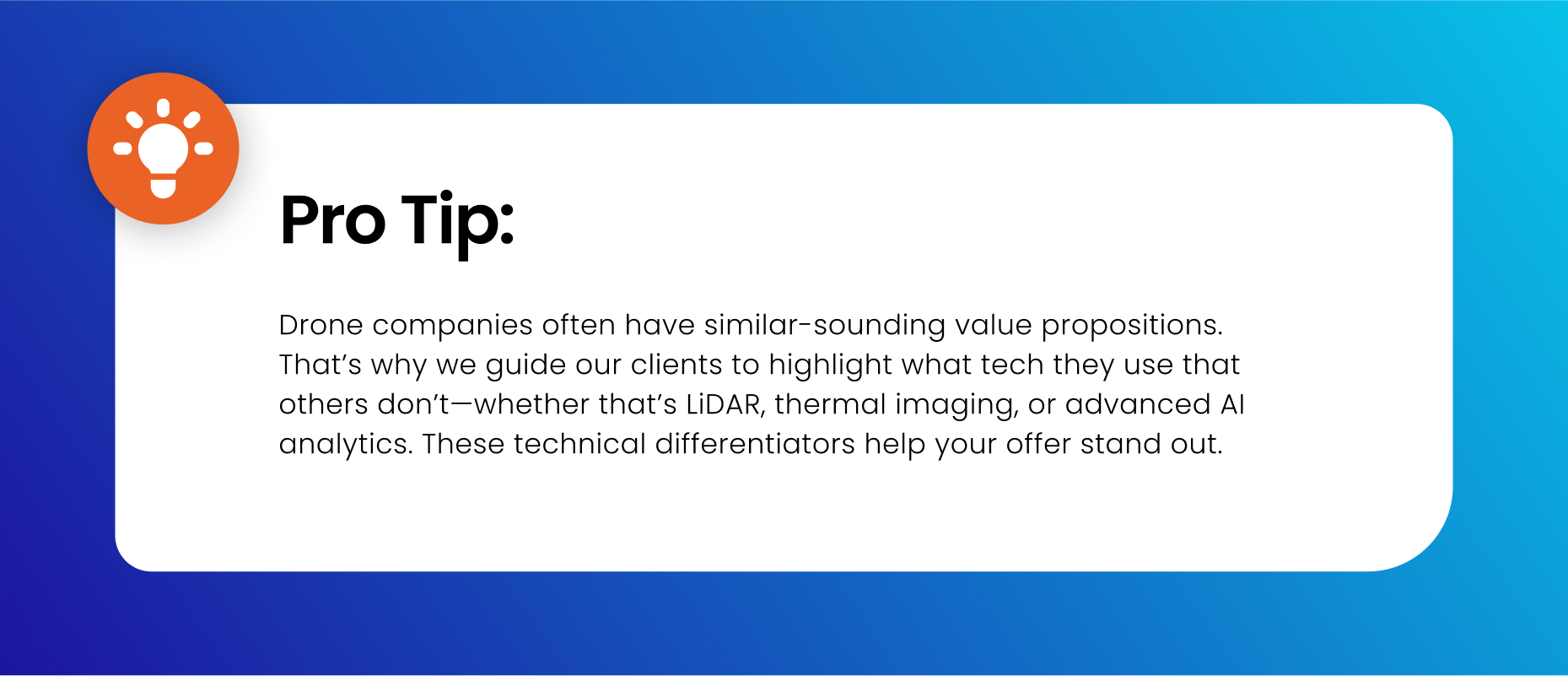
2. Understand Your Target Group (TG)
Your audience isn’t just “anyone in operations.”
Defining your Ideal Customer Profile (ICP) properly can make or break your campaign. Many drone companies struggle here. It’s not just about the industry—they need to identify the right job titles, seniority levels, and pain points.
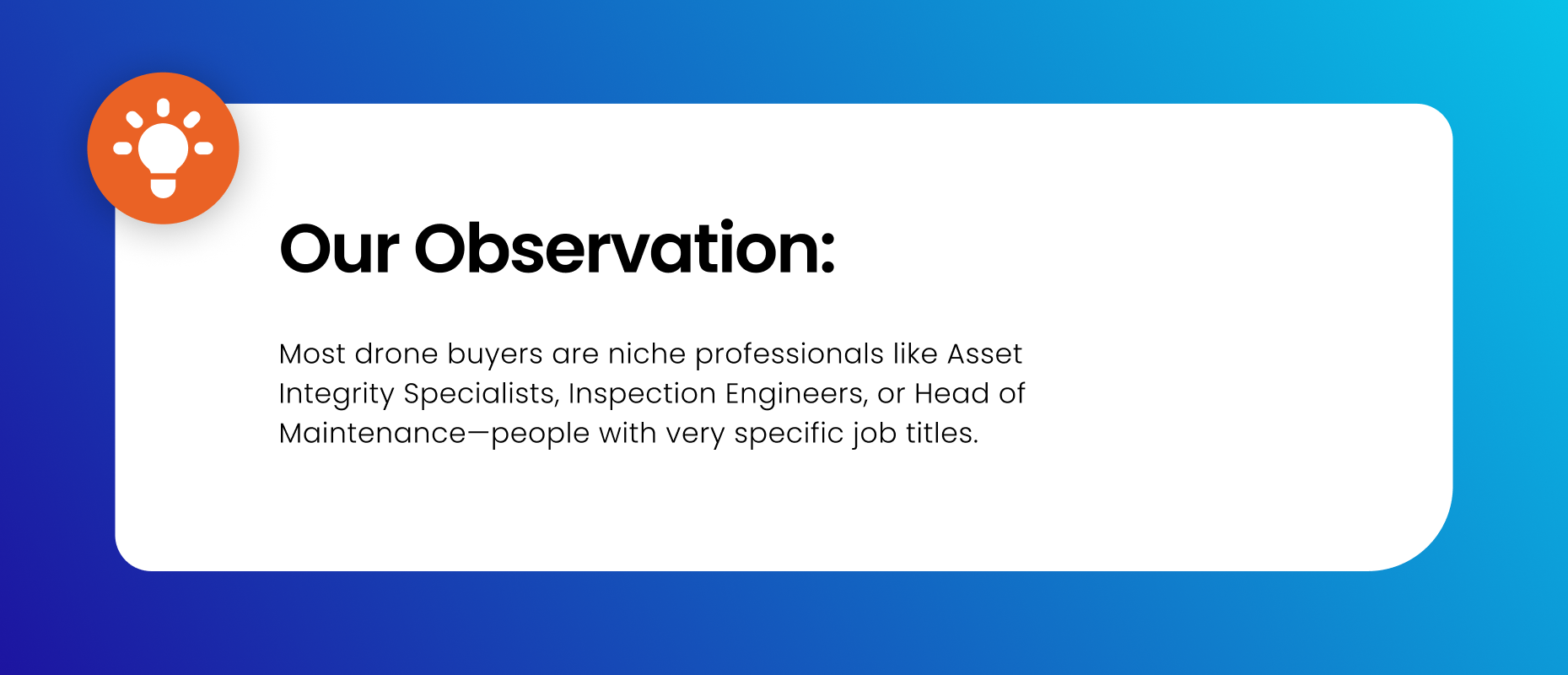
3. Lead Generation Is Constantly Changing for Hardcore Engineering Products
Selling drones isn’t like selling SaaS or a $50/month tool.
It’s deep-tech, high-ticket, and often unfamiliar to buyers. That means your lead-gen strategy needs to evolve constantly.
What worked six months ago might not work today.
Platforms, messaging, even formats like video or interactive tools, need to be tested and iterated.
For example, we’ve seen success using educational content offers or lead magnets, like “Why Drones Beat Traditional Methods for Pipeline Inspection”—to help explain the value before the sale.
Drone tech is evolving fast, and so should your lead generation playbook.
4. What the Future Would Look Like
The future of drone lead generation is intent-based, hyper-targeted, and trust-driven. With the rise of AI tools and predictive analytics, we’ll see platforms offering better ways to identify companies in buying mode.
But drone companies must invest in nurturing. The sales cycle is long. Leads won’t convert on day one. Email sequences, retargeting, and sales enablement content will be essential to close deals.
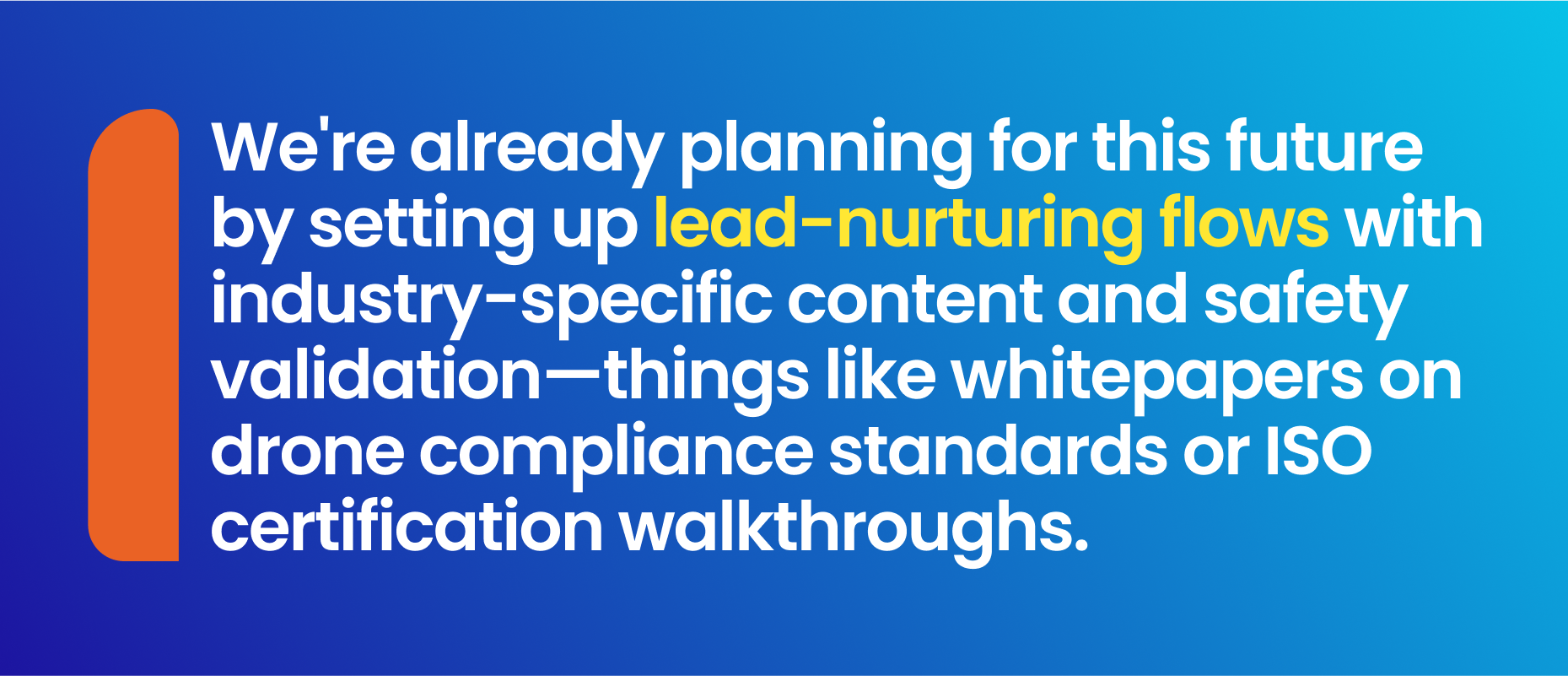
5. Best Platforms for Drone Companies to Generate Leads
LinkedIn remains the goldmine, especially for B2B drone services. The targeting capabilities let you reach specific roles in specific industries.
Other high-performing platforms include:
- LinkedIn Ads (With MoFu strategy):
We’re seeing an amazing response for our drone manufacturing and distribution clients with LinkedIn ads.
But instead of salesy Call-to-Actions like “Buy now” or “Inquire now”, we are helping our clients provide value with their LinkedIn ads.
For example, our Middle-of-the-Funnel (MoFu) lead magnet PDFs about Non Destructive Testing (NDT) or any specific technology in NDT, like UT, are working like a charm.
Right after the target audience interacts with our ads and downloads the lead magnet, we follow up with them strategically.
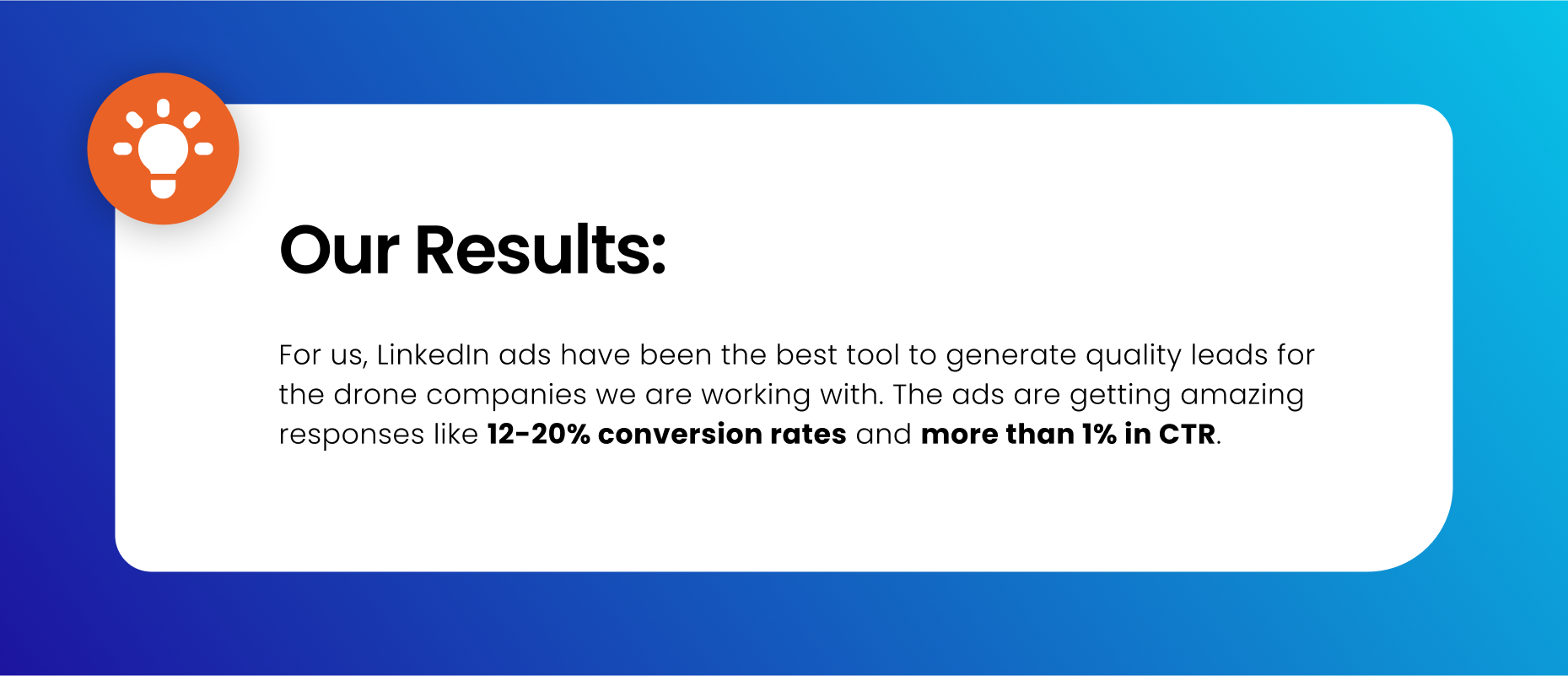
- Cold Emailing and cold DMing
If done right, cold emailing can do wonders for your drone business.
But instead of mass outreach to thousands of prospects mindlessly, we recommend a personalized and smart approach to cold campaigns.
Segmentize your cold email campaigns and LinkedIn DM outreaches with respect to the industries you are targeting, the location, and their unique operational drone use cases.
Agitate their problems with sharp messaging, help them visualize how your products can help them solve a problem that they are not seeing at the moment.
- Industry forums and events (offline or virtual)
Many drone companies are now exploring ways to showcase new tech, attend panels, and discuss regulations, applications, and market trends.
These events help build a brand, encourage partnerships, generate leads, and stay competitive in the fast-evolving drone space.
- Partnership channels
Run partnership programs and team up with inspection software vendors or engineering firms to become a more powerful voice in the market.
Instead of going alone, take help from your peers who are trying to solve similar problems for the same group of people.
6. Which Data and Reports to Look for While Generating Leads
You can’t improve what you don’t measure. While generating leads, drone companies should be tracking:
- Click-through Rate (CTR): Are people engaging with your content?
- Conversion Rate: Are leads taking your intended action (e.g., downloading a guide or booking a demo)?
- Lead Quality: Are they decision-makers or just curious?
- Sales Cycle Metrics: How long from lead to close?
And perhaps most importantly, track which content leads to actual pipeline revenue. It’s easy to get distracted by vanity metrics.
We use reporting dashboards to connect leads to deals. That way, we can double down on what’s working—whether it’s a case study or an industry webinar.
7. How to Sustain Your Sales Pipeline as a Drone Company
Initial lead gen is only part of the story. The bigger challenge is keeping your sales pipeline full and moving. This is where most drone companies drop the ball.
- You need to continuously feed the pipeline with new leads while nurturing existing ones through educational content, follow-ups, and product updates.
- And remember: Drone services often require budget approvals, legal checks, and safety validations. Be ready with case studies, compliance documentation, and proof of ROI.
We help our clients build sustainable content funnels—from MoFu whitepapers to BoFu demos—to guide leads through every stage of the journey.
Final Thoughts
Lead generation for drone companies is not a one-size-fits-all game. It’s about deep industry understanding, precise targeting, and smart content strategy. Most importantly, it’s about positioning your solution as the low-risk, high-tech answer to a problem your audience may not even know they have.
If you’re a drone company struggling to generate leads that actually convert, maybe it’s time to think differently.
Want to see how we’re getting 12–20% conversion rates for drone clients? Let’s talk!

